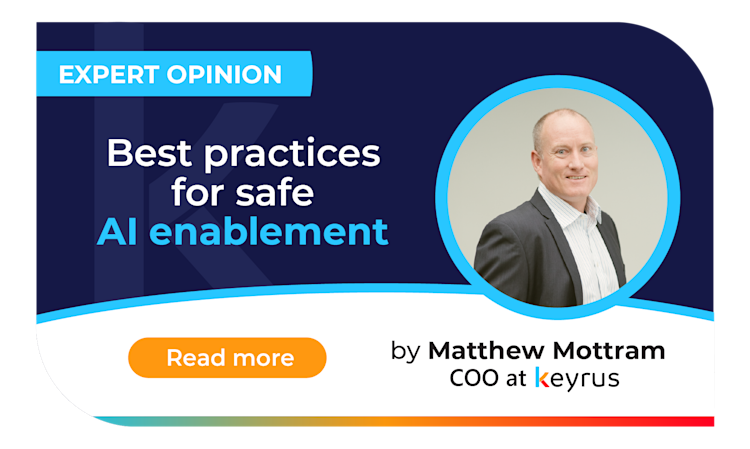The democratisation of artificial intelligence (AI) is rapidly transforming how work gets done. The potential of AI is immense: generative AI copilots that surface insights, chatbots that accelerate workflows, and predictive tools that drive decision-making. Yet, as the use of AI becomes more widespread, the associated security risks and ethical considerations must not be overlooked.
Without a robust framework for AI, the drive to use AI across the enterprise can spiral into confusion and risk. To truly realise the benefits of AI while ensuring safety, organisations must approach enablement and governance as two sides of the same coin.
Empowering the workforce using AI safely
AI tools are no longer reserved for data scientists. With the right AI framework, employees from all functions can benefit from AI’s capabilities:
Copilots embedded into Microsoft 365 and Power BI allow non-technical users to query data, generate dashboards, and even draft reports or presentations.
Chatbots and AI applications streamline HR, IT, and operations, improving response times and user satisfaction.
Predictive models empower teams with forecasts, from demand planning to churn prediction.
These AI systems are redefining productivity. But to avoid negative outcomes such as data breaches or biased outputs, businesses must implement clear security measures and AI governance.
A framework for responsible AI implementation
To scale AI across an organisation responsibly, governance should be embedded from the start. A comprehensive AI framework should include the following components:
1. Role-Based Access Control (RBAC)
Define and enforce access to datasets and actions based on user roles. For instance, a financial analyst using a BI Copilot should only access datasets pertinent to their region or responsibility.
2. Explainability and Transparency
AI decisions must be understandable. If users don��’t trust the outputs, they won’t use the tool. Dashboards and copilots should include clear AI explanations—such as model confidence scores and source data references—to foster trust.
3. Guardrails and Policy Enforcement
Using AI safely means putting up proper defenses:
Content filters ensure outputs align with brand tone, sentiment, and compliance rules.
Audit trails enable traceability of AI-generated decisions and support regular audits and compliance checks.
Monitoring tools detect model drift or biased behavior in real time.
Safeguarding developer AI workflows
Beyond business users, software engineers and data teams are adopting AI-driven tools. Large language models (LLMs) and coding copilots can assist in writing, reviewing, and deploying code faster than ever. However, enabling developers without appropriate oversight can introduce AI security risks:
Potential security vulnerabilities from AI-generated code
License contamination from inadvertent inclusion of GPL or other restrictive licenses
Blurred ownership between human and AI-contributed code
Subtle inefficiencies or inaccuracies
Security Best Practices for AI Developers
To ensure secure development and responsible adoption of AI technologies, organisations should adopt these best practices:
Code Attribution: Track AI-generated code in PRs to distinguish it from human contributions—vital for audit and debugging.
Security & License Scanning: Use tools like Snyk or SonarQube to scan all AI-suggested code for risks or license violations.
Human-in-the-Loop Reviews: AI assistance should augment human judgement—not replace it. All AI-generated pull requests must undergo human validation.
Agent Guardrails: Limit what AI agents can do—scope their tasks, set repository access rules, and define deployment rights.
Real-World applications of secure AI practices
These examples show how leading organisations implement AI while embedding accountability:
Finance + BI Copilot: Regional teams use AI copilots to explore budget trends. Thanks to RBAC, queries are restricted to authorised datasets—ensuring data privacy.
Customer Service + LLMs: Support teams leverage LLMs for drafting responses. Security controls ensure those drafts are filtered for tone and brand compliance.
Sales Ops + Predictive AI Models: AI forecasts help optimise territories. But users can inspect model assumptions—promoting responsible AI decisions that include human insight.
Building a future-proof AI strategy
To empower your workforce while maintaining safety, you must implement an AI strategy grounded in risk management and governance. From AI frameworks and security protocols to mitigating bias and ensuring data integrity, each layer strengthens your organisation’s AI journey.
At Keyrus, we understand the balance between innovation and control. Let us partner with you to design and deploy AI systems that are scalable, compliant, and human-centric.
Contact us at sales@keyrus.co.za to begin your AI journey with confidence.
